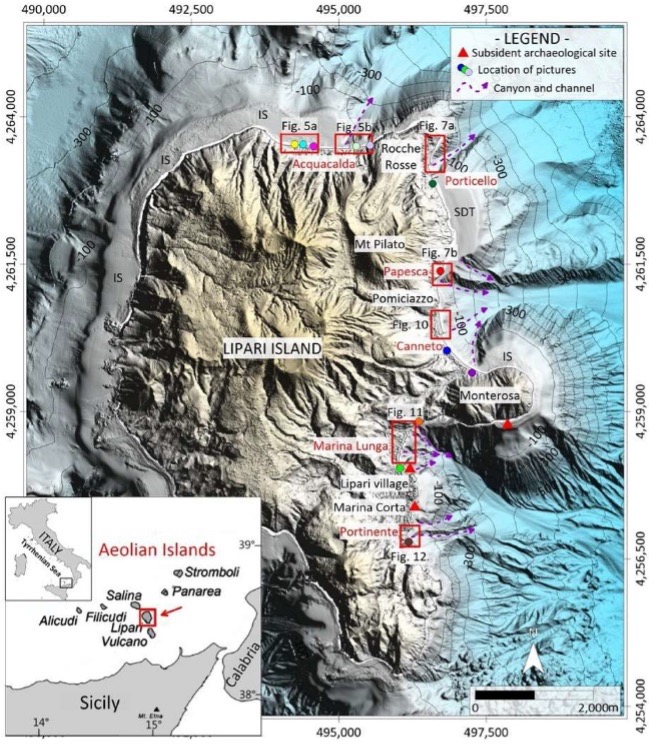Summary
Lipari is the largest and most populated island in the Aeolian Archipelago, a UNESCO site, and a highly frequented touristic destination. As in many other insular settings, the low-lying coastal stretches in the E and NE sectors of Lipari are locally exposed to coastal erosion and flooding, enhanced by subsidence effects leading to local sea level rise. Most of these coastal sectors appear critical, being narrow and increasingly threatened by the risk of permanent inundation and beach disappearance. In this study, this setting is placed in the wider context of the decadal evolution of the main beaches, analysed through a multidisciplinary approach, which includes remote sensing techniques (aero-photogrammetry, unmanned aerial vehicle survey, and satellite data), offshore geophysical surveys (high-resolution multibeam bathymetry), and field observations. The results show a variable interaction in space and time between natural and anthropogenic factors in the long- and mid-term evolution of the studied coastal areas. Considering that part of the local economy at Lipari depends on beach tourism, proper future management is required in the view of natural risk reduction and in the light of future climate changes and related impacts.
Figure

High-resolution digital elevation model of Lipari Island and offshore sectors (contour depths in meters), with location of the coastal areas under study. Red boxes and color dots represent the areas of the maps and the location of the pictures reported in the following figures, respectively. Red triangles represent the location of subsident historical–archaeological sites (see text for details). The position of the main canyon and channel heads affecting the eastern coastal area of Lipari in shallow water is also indicated, together with that of other submarine features cited in the text (IS: insular shelf, SDT: submarine depositional terrace). In the inset: location of the Aeolian Islands in the southern Tyrrhenian Sea.
How to cite and download the publication:
Romagnoli, C.; Bosman, A.; Casalbore, D.; Anzidei, M.; Doumaz, F.; Bonaventura, F.; Meli, M.; Verdirame, C. Coastal Erosion and Flooding Threaten Low-Lying Coastal Tracts at Lipari (Aeolian Islands, Italy). Remote Sens. 2022, 14, 2960. https://doi.org/10.3390/rs14132960